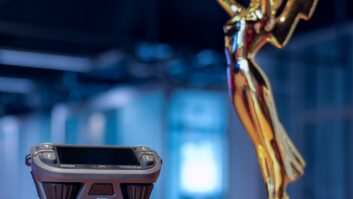If you want to see just how totally out of control the high-techuniverse is, then go to your favorite Internet search engine andtype in the words “bogus patents.” NorthernLight.comreturns over 250 results — almost all having to do withcompanies and their lawyers fighting over the legitimacy of newtechnology patents. Not over who did something first, but whetherthe patents should exist at all or not.
In the old days, patent fights were about timing: Thedevelopment of everything from the sewing machine to the televisionis littered with cases in which one inventor or company claimed he(it was almost always a “he”) invented something beforesome other guy did and therefore was eligible for compensation. Andusually things were reasonably clear-cut: Either someone couldprove that they had come up with an idea and used it first or theycouldn’t. Patent officers and judges could determine, with acertain amount of confidence, when one invention bore too close aresemblance to another, or when someone expressed the main pointsof an idea — the concept known as “prior art”— before someone else did.
The whole idea behind patents, like copyrights, was not just toensure that an inventor could make money from a new idea, but alsoto publish the details of the invention so that others could buildon it — at the same time creating a reasonable monopoly forthe original patent holder and requiring that others who want touse the idea pay a license fee. The patent system was supposed torestrict and regulate competition, not shut it off. But it also hadanother role: to spread knowledge.
Today, however, companies look at patents in a totally differentlight. A whole new industry has sprung up in“defensive” patents — let’s take out a patent onthis idea, even if we’re not using it and may never, just to makesure no one else can. It’s become particularly nasty in thesoftware world. Although software patents are illegal in Europe, inthis country thousands of patents are applied for every year fortechniques like handling e-commerce transactions, compressingimages or tracking Internet users’ habits. To make matters worse, alot of these concepts are far from original — they’ve justnever been patented before. Companies are staking claims on ideasthat have been floating around for years and used by many, but thatdoesn’t deter them from demanding royalties on “their”intellectual property.
For a patent to be valid, it has to be considered“non-obvious,” that is, a genuine invention. A landmarkSupreme Court ruling in 1882 read, “It was never the objectof patent laws to grant a monopoly for every trifling device, everyshadow of a shade of an idea, which would naturally andspontaneously occur to any skilled mechanic or operator in theordinary progress of manufactures. Such an indiscriminate creationof exclusive privileges tends rather to obstruct than to stimulateinvention.”
Probably half of the patents I’ve read are clearly invalid toanybody who knows the art.
— Raph Levien
But the definition of what is “non-obvious,”especially to those who smell money, seems to be rather fluid. Ihave personally been involved in a couple of scraps, within our ownindustry, over this issue. A few years ago, a keyboard manufacturertried to patent the idea of velocity-based sample switching; thatis, how hard you hit a key on a musical keyboard determines whichsample will play. Very early in the days of digital samplers, thismight have been considered a patentable idea, but by the time thismanufacturer got around to it, it was already in wide usethroughout the industry. It was an obvious feature for any samplingkeyboard that intended to reproduce the sound of a real musicalinstrument. The folks who objected to the patent being grantedcontacted me, and I was able to point them to a user manual from anolder instrument that clearly showed this concept being used tosimulate a piano sound over a wide dynamic range. Havingestablished prior art, they were able to have the patentapplication thrown out.
More recently, I was a consultant for a law firm on the otherside of the fence. A research institution was suing a commercialmanufacturer for using a signal-distribution scheme the institutionhad patented for, and I was asked for my “expert”opinion as to whether there was indeed infringement. My reportread, “Yes, the defendant was infringing on the patent, but Icould name four other companies that were also infringing, becausethe idea was so obvious it should never have been patented.”I was thanked (and paid) and told that my presence in court wouldnot be necessary. As far as I know, the case is still pending.
One of the problems with the current patent situation is thatmany of the people who work at the U.S. Patent and Trademark Officedon’t seem to be the ideal candidates for making fair andintelligent decisions about the new concepts and ideas that arebeing thrown at them constantly. Given the ever-faster-spinningrevolving door between business and government, it’s not a stretchto think that many inspectors could be, as one report accuses,“former lobbyists for the mega-corporations they’re supposedto be overseeing.” Other reports say that patent officerswork on a quota system, and so they can’t afford to spend the timeand resources investigating new filings. Whatever the reason, thereis a new laxity in the patent office, and large high-tech companiesare taking advantage of it, often to smaller companies’detriment.
Computer writer Joseph T. Sinclair puts it this way: “Forlack of trained personnel, the Patent Office in the last few yearshas approved thousands of patents regarding online [Web] businesssystems that will never hold up in court. Most of the patents havebeen filed defensively on the advice of attorneys. In other words,if a corporation sues your company for a patent infringement basedon its bogus patent, your company can counterclaim for infringementon its bogus patent. The result is a wash and a moneylesssettlement. But if you don’t have a bogus online business systemspatent or the money for an attorney, you’re a victim in thisSilicon Valley blood sport.”
Therefore, a lot of ideas — like that signal-distributionconcept — receive patent protection when they shouldn’t. RaphLevien, an inventor and programmer active in the open-sourcemovement, says, “The examination process for software patentsis a sham — probably half of the patents I’ve read areclearly invalid to anybody who knows the art.” Perry Leopold,an Internet innovator, says, “The patent bar has been loweredso far you can trip over it if you’re not watching.” Perhapsno other striking example of this can be found than patent number6,004,596, “Sealed Crustless Sandwich,” which is,literally, a patent issued in 1999 for a peanut butter and jellysandwich.
There’s tremendous pressure from the high-tech community toshove through patents on “every shadow of a shade of anidea,” just to make sure the competition doesn’t do the samething first. And it’s led to some really interesting battles.Priceline, for example, the “name-your-price” airlineticketing service that William Shatner proclaimed was going to be“really big” (but which lost 98% of its value in thelast year, not to mention Shatner), sued Microsoft over aname-your-price hotel room service on the software giant’sExpedia.com travel site. Last year, on the other hand, Microsoft— which has been accused of being one of the worst offendersin this area — used its legal muscle to shut down anindependent developer that had figured out how to decode theirActive Stream Format (ASF). The developer maintains, quitelogically, that it’s ridiculous to patent a file format, but hehasn’t got the money to battle Gates’ legal minions.
Some government forces are trying to fight back. CongressmanRick Boucher, D-Va., co-sponsored a bill last session that wouldoutlaw software patents by “creat[ing] the presumption thatthe computer-assisted implementation of an analog world businessmethod is obvious and thus is not patentable.” Given thecurrent rabid pro-business atmosphere in Washington these days,it’s hard to imagine this could pass, but stranger things havehappened. (And, considering that Europeans have already done this,embarrassment can be a strong motivator.)
So what does this have to do with our corner of the high-techworld? Well, one bogus patent that has the potential of screwing alarge number of us pretty badly is currently floating around— and one of our number may have helped to stop it.
Set the Wayback Machine to Philadelphia, 1981, Sherman, andwe’ll visit Perry Leopold, an itinerant singer/songwriter with onewell-received but minimally distributed self-produced record of“progressive folk” recorded in a single session in thebasement of a shoe repair shop, along with 10 years of heavytouring to his credit. Taking a break from the road, Leopold set upa self-help organization for musicians, offering contacts and tipsfor dealing with various aspects of the music business, fromself-promotion to copyright issues to record deals. It was calledthe Performing Artists Network, or PAN, and in 1983, it wentonline, using the services of Delphi (then a competitor toCompuserve and The Source, the two biggest online networks) andhooking up users around the country through the data networksTelenet, Sprintnet and Tymenet. “I always shared my contactswith friends and really anyone I met on the road,” he saystoday, “in the belief that it all came back to me somehow,and then some. PAN was an extension of that philosophy.”
The sign-up fee was a hefty $250, but Leopold waived the cost inmany cases. There was no such thing as unlimited Internet access inthose days, and for heavy users, it was not uncommon for onlinecharges to exceed $100 a month. But musicians, engineers,programmers and marketers in the burgeoning computer music fieldsigned up in droves, especially when Leopold started offering freememberships to customers of selected companies.
I was working with a music software startup at the time, and wewere one of the first to jump on the PAN bandwagon. We were thefirst, in fact, to offer online technical support, in the person ofyours truly, and many, many manufacturers followed suit. Leopoldpioneered a lot of online features we today take for granted: Hecreated the first online gateway between Japan and North America,his was the first service to market e-mail-to-fax and fax-to-e-mailconversion (as well as voice-annotated fax), PAN was one of thefirst private networks to get access to the Internet in 1992, andhe even built, in 1992 (before it was strictly legal), what heclaims was the world’s first Internet-based shopping mall, inconjunction with a music dealer.
PAN also had online areas for synth patches, MIDI files (theservice was the host for the MIDI Manufacturers Associationdiscussion forums and files for many years) and samples. At the1987 meeting of the Audio Engineering Society, he presented a paperon digital downloading of music, in its various forms.Significantly, he described a way to preview digital audio files:“At 2,400 baud,” he recalls, “people weren’t keenon spending 12 hours at $12 an hour to download a couple of megs ofstring sounds, so they previewed them by first downloading a smallfile from a collection of samples. Samples are digital audio, nomatter how you look at it.”
Jump to October 1996. A company in San Francisco called IntouchGroup applied for a patent on a “network apparatus and methodfor preview of music products and compilation of market data”— in other words, a way for folks to download snippets ofmusic and for the hosts to keep track of who was doing it. Thepatent, number 5,963,916, was granted three years later. In thespring of 2000, Intouch Group decided to flex its muscle and suedAmazon.com, Liquid Audio, Listen.com, Entertaindom andDiscovermusic.com for patent infringement, because they allow usersto download and preview digital music and/or video. It would seemthat as far as Intouch Group is concerned, anyone who sets up asystem for downloading previews of any media file involving musicis in violation of its patent.
Now it starts to get interesting. Amazon.com (also known as thelargest nonprofit organization in the galaxy, but that’s anotherarticle) itself is embroiled in a patent suit against Barnes &Noble. Amazon has claimed that it owns the patent on“one-click” Internet shopping, and Barnes & Noblehas been violating it. Amazon even managed to get an injunctionagainst Barnes & Noble, forcing the company to take thatfeature off its Website. Tim O’Reilly, one of the most respectedpublishers of books and newsletters about the Internet and anopen-source advocate, wrote an open letter to Amazon CEO JeffBezos, criticizing the company for its action and calling on Bezosto relinquish rights to the patent. While Bezos didn’t agree tothat, he did something potentially more intriguing: He teamed upwith O’Reilly and a Boston patent lawyer named Charles Cella tocreate a new Web-based company called BountyQuest, whose mission is“market-based patent reform.”
BountyQuest is looking for people — inventors, engineers,researchers, even graduate students — who might haveinformation germane to a patent fight, but who otherwise might notthink of getting involved. How are they going to find these people?By offering “bounties” of up to $25,000 for informationthat helps to debunk any of the dubious patents and copyrights ontheir list. What goes on the list is determined by BountyQuest’scorporate clients, who put up the bounty money (and BountyQuesttakes a chunk). As of this writing, the list includes a patent onpre-paid cellular service, a patent on window shades that open andclose automatically when the light changes, and a copyright on thedesign and image of a particular-style Japanese pagoda. The clientsare usually anonymous, but sometimes it’s pretty easy to guesswho’s looking for information.
Not surprisingly, one of the first bounties the site offered wasfor prior art that could damage Intouch Group’s claim on previewingdigital audio. Just nine days after the posting, Perry Leopold,alerted by his lawyer who read about the reward in The New YorkTimes, sent a copy of his 1987 paper to BountyQuest. Accordingto the site, “It quickly became apparent that his submissionprecisely matched all the criteria necessary to make him awinner.” And so Perry Leopold became one of the first fourwinners of a $10,000 prize for showing that he invented something— which he never claimed to own — that someone else wasnow trying to collect royalties on.
It’s been many years since Leopold played his music on thestreets and made records in basements. PAN, unlike many of thecompanies that used its services, was profitable from the word goand still is as a networking resource and Web hosting service. Alawsuit against Rupert Murdoch (who bought Delphi and ran it intothe ground) won Leopold a hefty settlement a few years ago. But hecould have conceivably made a lot more from the work that he did— with the help of some of the most important figures in themusic technology industry in the ’80s and early ’90s.
“Someone recently asked me what other things I might havepatented, had I been of a mind to at the time,” he says,“and if I had even realized such things werepatentable.” He then reels off some 18 ideas that most of ustake for granted today, but for which he claims he could have“planted the flag.” “But I consider all of thesethings innovations rather than ‘inventions,’ per se,and thus, to my mind, are not worthy of a patent. It’s not likeinventing the transistor — now that is an invention!”And think of where we would be today if someone had taken out adefensive patent against the concept, before Bell Labs came up withit.
Paul D. Lehrman is a composer, author and educator, as well as“the guy” on Mix‘s Website, mixonline.com. His personal page is at paul-lehrman.com.







